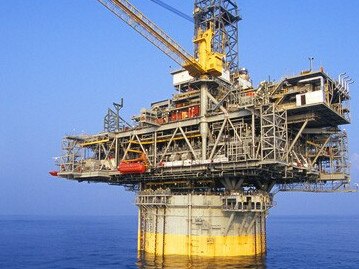
They did not forecast the latest oil price jump, but they have been a long-term bull for the oil price and are plunging about 40 per cent of their capital investment over the next five years into oil.
Not surprisingly the shares in the Big Australian have risen as the major institutions re-examine their BHP forecasts, which are based on no significant jump in oil prices.
Over the decades investment analysts have been urging BHP to not just quit the US shale oil business but the total petroleum sector.
But the BHP tradition (unlike Rio Tinto) is that over the years oil has been a remarkable hedge against mineral price falls because many of the world mineral downturns have been caused by big rises in the price of oil.
Given the major changes that have taken place in the BHP balance sheet and capital investment programs, the best way to look at BHP is to forecast its so-called “free cash flow”.
Free cash flow is calculated by taking the cash flow of the enterprise and then deducting what it plans to spend on new projects.
In the past decades BHP’s new projects have taken a much bigger proportion of cash flow than is planned for the next half decade. In addition, much of the BHP free cash flow in recent years has been directed towards reducing debt but debt reduction is now finished, and BHP can now distribute all of its free cash flow.
And so the BHP that goes into the current oil turbulence is different to any BHP that has existed during the last 50 years.
The level of free cash flow in the current environment is all about iron ore volumes and pricing, particularly as US shale oil has been sold and Bass Strait oil is well past its peak. The major BHP oil investment in the Gulf of Mexico is a few years away from boosting free cash flow.

In the current year many analysts say BHP will have a free cash flow in the vicinity of $US10 billion. Its market capitalisation, including the UK company, is around $US120 billion.
In theory BHP could distribute all of that $US10 billion (via dividends or buy backs) giving it a yield of around 8 per cent.
For Australian investors that yield is able to be fully franked because not only does BHP have undistributed franking credits, but the iron ore boom is pumping them out via higher taxes paid in Australia. I know the high level creates inner frustration among many BHP executives.
But the BHP forecasters say that in 2020-21 the Big Australian will have a tough year because the price of iron ore will fall in line with the sluggish China economy and it will be some years before the electrification boom boosts copper.
And so many BHP analysts have the BHP free cash flow falling below SUS7 billion, which takes the “free cash flow yield” down to just under 6 per cent. But franking credits takes it higher.
Nevertheless, over the two years the theoretical average free cash flow yield is seven per cent (plus franking credits) based on a $US120 billion market capitalisation. Of course, BHP may not distribute all its free cash flow, but it has organised its structure so that it can.
Now enter the clear possibility of long-term oil turbulence and much higher oil prices which will change the equation and make the decisions to move into one of the more politically stable sources of oil production a fantastic call.
If we have much higher oil prices it will stunt growth and rekindle inflation, which is exactly why the BHP CEO greats of McLennan, McNeill, and Loton passed onto their successors their determination that BHP not follow Rio Tinto and exit the oil business.
Both Australian and global analysts hated BHP being in oil because the investment research houses had separate departments for oil and minerals and the BHP strategy made their analysis more difficult. Over the years they have had campaigns to try to make BHP leave oil to assist their forecasting. The foolishness of analysts is one reason why indexed funds have enjoyed a much bigger market share and now account for around one third of the BHP share register.
What BHP has become is a massive cash machine where investment is planned many years in advance. I recently ran into a BHP executive and asked whether the company was having problems getting approvals for new mines. The answer was “no” because apart from oil in the Gulf of Mexico and perhaps potash all its expansions are close to existing mines. In the Gulf most of the approvals have been obtained and it’s down to drilling.
And the Canadian potash mine is under development, albeit showily.
This restraint of capital spending has turned BHP into a cash machine where payouts to shareholders will fluctuate with the price of minerals. And every so often one of those minerals will boom.
For the last few years it has been iron ore. BHP looks to copper and nickel as the next booms, but maybe it’s oil.
One day when the market rerates the free cash flow from minerals companies, BHP will look much harder at new projects.
But when BHP’s existing mines have such a low market rating when interest rates are so low it’s hard to justify new greenfield investment.



In the strategy caverns of Australia’s largest listed enterprise, BHP, there is a feeling of satisfaction.